1. Historical Memorial Museum
(三峽鎮歷史博物館)
This two-story 72-year-old brick building served as Sanhsia Town Hall until 1986. During the Japanese colonial era it was regarded as the most beautiful official building in Taiwan. The museum opened in 1999, and contains permanent displays on the history, culture and customs of Sanhsia, with special sections on the Tsushih Temple and Minchuan "Old" Street. Open 9am to 4:30am; admission is free.
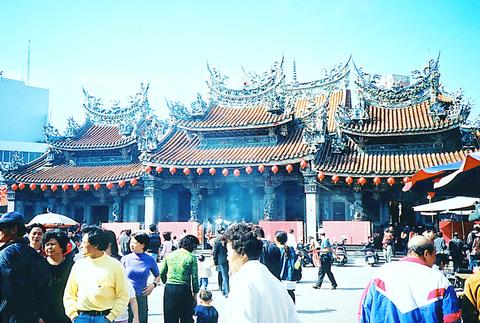
18 Chungshan Rd. (
2. Explosion of Fame Offers (一泡而紅)
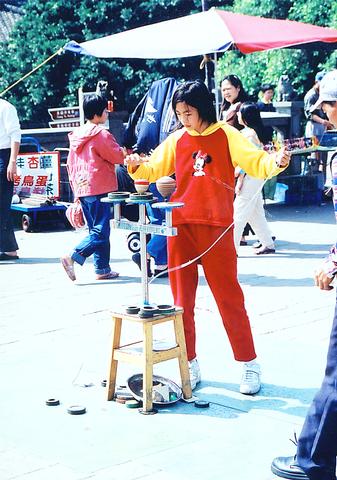
A wide range of hot and cold teas, juices, papaya milk, puddings and "fruit noodles" (a sweet dessert incorporating beans or pineapple) are offered here, as well as plenty of space to sit and enjoy them. Most drinks cost around NT$25, while nothing is priced above NT$40. A good place to rest your feet between sightseeing sessions.
9 Chungshan Rd. (中山路9號); tel: (02) 8671-0169
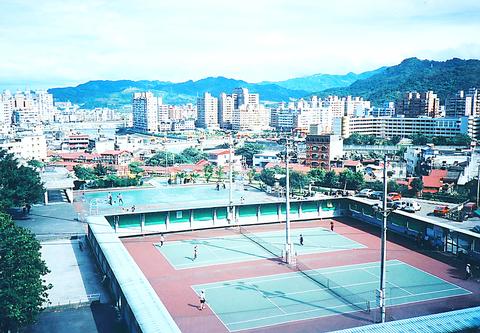
3. Sanhsia Market (三峽市場)
This indoors wet market will interest some, though others may find the dismembering of carcasses and butchering of chickens stomach-churning. More edifying is the use of old-fashioned machines to manufacture various kinds of noodles, and the bubbling troughs of bamboo shoots. The streets hereabouts are crammed with vendors and shoppers on weekend mornings. Try the taro waffles or the yam pancakes.
Entrances on Hoping St. (和平街) and Minsheng St. (民生街)
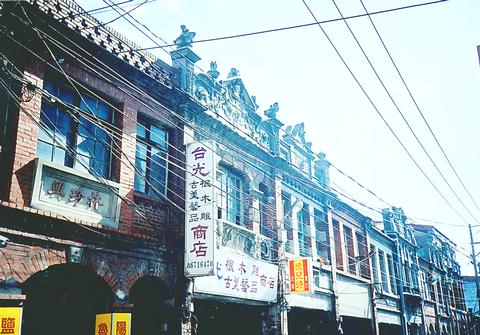
4. Sanhsia Farmers' Association Office
(三峽農會)
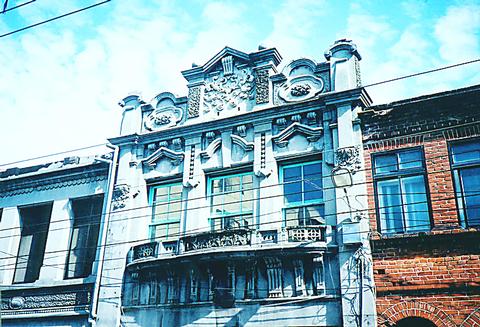
Despite its distinctly Japanese styling, this elegant two-story building -- which dates from 1937 and looks as though it has seen better days -- is easy to miss as it is set back from the street and often obscured by a cluster of vendors.
154 Minsheng St. (
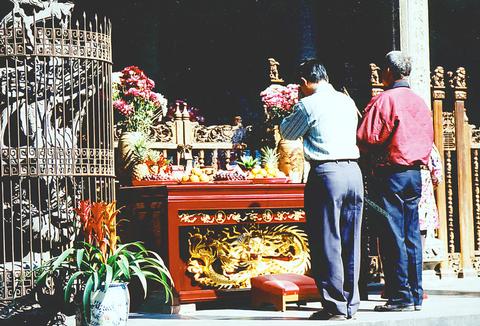
5. Wanfa Ironsmiths (萬發打鐵店)
The hoes, picks, machetes, and cleavers sold here hardly make for good souvenirs, but blacksmiths like Mr Su and his assistant are few and far between in modern Taiwan. Stop by during business hours and you're likely to see metal implements being custom-made and hand-modified the traditional way.
15 Wenhua Rd. (文化路15號); tel: (02) 2671-9876
6. Scent Guarantea (摘香茶趣)
Delicious Asian food, a few Western dishes, quality Chinese teas, and unusual beverages such as Indian latte tea and champagne oolong tea. (See review at left).
166 Fuhsing Rd. (復興路166號); tel: (02) 8674-3555
7. Buses to Taipei
The Blue 19 links Sanhsia and Yingko with Hsinpu (新埔) MRT station; the 278 goes as far as Sungshan Domestic Airport. The 702, 703 and 705 begin and end each journey on the corner of Chunghua Rd. (中華路) and Wuchang St. (武昌街), near Hsimenting.
Very close to the corner of Fuhsing Rd. and Minsheng St.
8. Minchuan "Old" Street (民權老街)
Boasting more than a 100 buildings which date from the final decades of the Qing Dynasty and the early years of the Japanese colonial period (1895-1945), this enchanting thoroughfare has experienced something of a revival in the last few years. Rather like Taipei's Tihua St. (迪化街), one end buzzes with tourists and busy stores, while the other is lined by decrepit houses, several of which are in such a perilous state that only reinforcing girders stave off outright collapse. Souvenir and curio shops are becoming more common, but a few traditional grocers still operate here, plus at least three coffin makers.
9. Tsushih Temple (祖師廟)
To the untrained eye, Sanhsia's prime attraction looks much like many other Taiwanese temples. However, those inclined to take their time and do a little research will see that exceptional craftsmanship has been invested here (though protruding rebars are visible in places). There are finely detailed paintings and carvings; the ornate stone columns feature dragons, birds, squirrels, turtles, fish, serpents, soldiers, sages, generals and gods. Particularly worth seeing is the intricate ceiling of the inner sanctum. The original structure was built in 1769 by settlers from Fujian Province. Damaged by an earthquake in the early 1800s, then razed by Japanese soldiers in 1895, the temple had again fallen into disrepair by the end of World War II. It has been under almost continuous renovation since 1947; for more than three decades, restoration efforts were led by Sanhsia's most famous son, painter and local politician Li Mei-shu (see 15 below). Art aficionados should make the effort to see this temple on a weekday; those who do so will find it as much a working temple as a tourist attraction.
1 Changfu St. (
10. Restaurant at 57 Hsiuchuan Street
Taiwanese food doesn't come much more freshl. (See review at left.)
57 Hsiuchuan St. (秀川街57號); tel: (02) 8672-6489
11. Changfu Restaurant (長福飲食店)
Centrally-located eatery offering orthodox Taiwanese cooking for groups. (See review at left.)
17 Changfu St. (長福街17號); tel: (02) 2671-9543
12. Hsiuchuan Street (秀川街)
This thoroughfare, lined with old homes and little barbershops -- and bisected by the forecourt of the Tsushih Temple -- winds through the central part of Sanhsia with a logic all of its own. There are at least three sealed-up old wells, including one in the courtyard of the 220-year-old Tsaisu Temple (宰樞廟), a serene but somewhat tatty shrine.
13. Changfu Bridge (長福橋)
A modern Taiwanese version of Prague's Karlovy Most (Charles Bridge), visitors setting out from the Tsushih Temple and heading toward the Li Mei-shu Memorial Gallery will find this by far the most direct and pleasant route. On weekends and holidays, it's a wonder that this bridge -- which is closed to all vehicles -- doesn't collapse under the weight of tourists and vendors. Look out for the Chinese chess players, the mobile pachinko machines and the spinning-top experts.
14. Changfu Parking Lot (長福停車場)
The parking situation in central Sanhsia is nightmarish on weekends. If you must drive, this is your best hope. Give serious thought to public transportation, though -- the town's attractions can all be reached on foot.
Located on Kuangming Rd. (光明路)
15. Sanhsia Noodles (三峽麵攤)
Less than five minutes' walk from the Tsushih Temple, but distant enough to offer some much-needed respite from the crowds, this popular noodle joint consists of a few tables arranged in the forecourt of an Earth God shrine. The menu is basic: there's a choice of "oil noodles" or rice noodles, thin slices of duck meat or chopped pork, but very little in the way of vegetables. A bowl of oil noodles, containing bean sprouts and small pieces of pork, makes a good snack and costs NT$35.
47-2 Mintsu St. (民族街47-2號)
16. Li Mei-shu Memorial Gallery
(李梅樹紀念館)
Li Mei-shu (1902-1983), one of Taiwan's most renowned painters and a former Sanhsia mayor, was responsible for the restoration of the Tsushih Temple after World War II (see 11 above). This gallery, established by his descendants in 1995, has a large collection of Li's works, including some masterpieces of realism he executed in the 1970s. One of Li's sons, C.W. Li (
10, Lane 43, Chunghua Rd. (中華路43巷10號); tel (02) 2673-2333; http://limeishu.org
17. Tranquil Destiny (淨心緣)
Clean, quiet and inexpensive, this peaceful little eatery offers meat-free versions of popular Taiwanese dishes such as three treasures rice, -- a mixture of three meats -- chicken chop rice and pork chop rice, plus a self-service, pay-according-to-weight cafeteria.
23 Chunghua Rd. (中華路23號); tel (02) 2672-1092

Taiwan Power Co (Taipower, 台電) and the New Taipei City Government in May last year agreed to allow the activation of a spent fuel storage facility for the Jinshan Nuclear Power Plant in Shihmen District (石門). The deal ended eleven years of legal wrangling. According to the Taipower announcement, the city government engaged in repeated delays, failing to approve water and soil conservation plans. Taipower said at the time that plans for another dry storage facility for the Guosheng Nuclear Power Plant in New Taipei City’s Wanli District (萬里) remained stuck in legal limbo. Later that year an agreement was reached

What does the Taiwan People’s Party (TPP) in the Huang Kuo-chang (黃國昌) era stand for? What sets it apart from their allies, the Chinese Nationalist Party (KMT)? With some shifts in tone and emphasis, the KMT’s stances have not changed significantly since the late 2000s and the era of former president Ma Ying-jeou (馬英九). The Democratic Progressive Party’s (DPP) current platform formed in the mid-2010s under the guidance of Tsai Ing-wen (蔡英文), and current President William Lai (賴清德) campaigned on continuity. Though their ideological stances may be a bit stale, they have the advantage of being broadly understood by the voters.
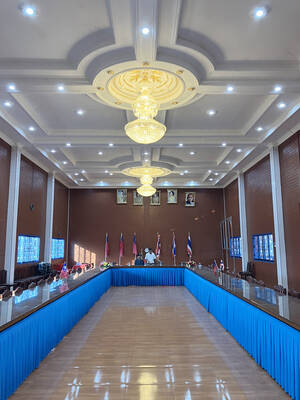
In a high-rise office building in Taipei’s government district, the primary agency for maintaining links to Thailand’s 108 Yunnan villages — which are home to a population of around 200,000 descendants of the Chinese Nationalist Party (KMT) armies stranded in Thailand following the Chinese Civil War — is the Overseas Community Affairs Council (OCAC). Established in China in 1926, the OCAC was born of a mandate to support Chinese education, culture and economic development in far flung Chinese diaspora communities, which, especially in southeast Asia, had underwritten the military insurgencies against the Qing Dynasty that led to the founding of
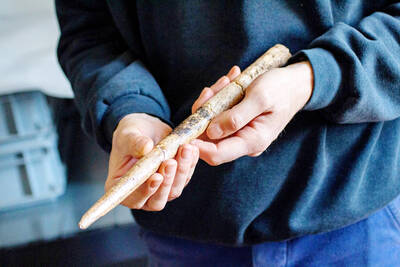
Artifacts found at archeological sites in France and Spain along the Bay of Biscay shoreline show that humans have been crafting tools from whale bones since more than 20,000 years ago, illustrating anew the resourcefulness of prehistoric people. The tools, primarily hunting implements such as projectile points, were fashioned from the bones of at least five species of large whales, the researchers said. Bones from sperm whales were the most abundant, followed by fin whales, gray whales, right or bowhead whales — two species indistinguishable with the analytical method used in the study — and blue whales. With seafaring capabilities by humans